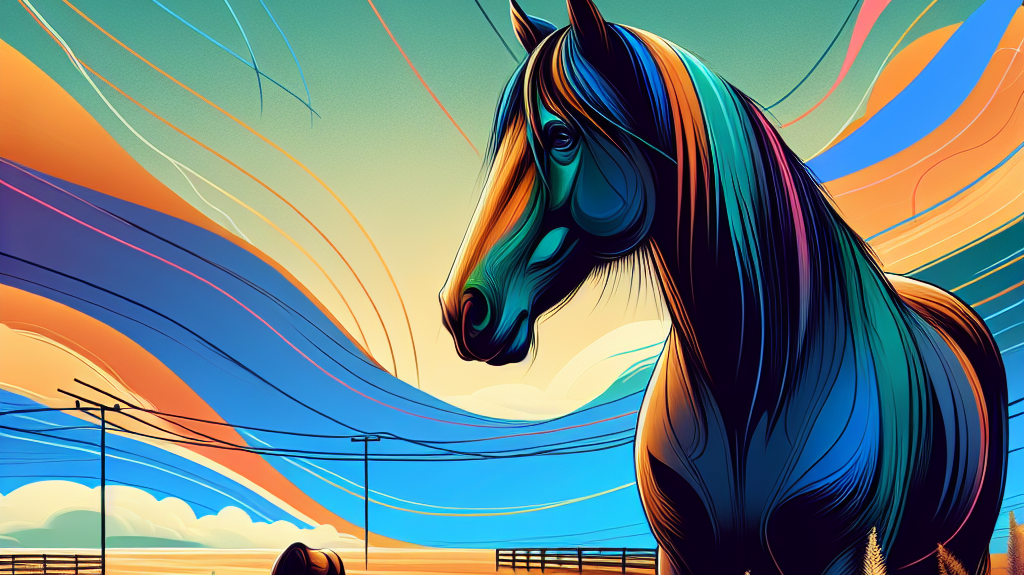Nipna Mighty Oak: Ascending to Equestrian Stardom at the 2024 Royal International Horse Show
The 2024 Royal International Horse Show (RIHS) showcased numerous magnificent equine performances, but none stood out as much as the remarkable victory of Nipna Mighty Oak, a nine-year-old Dales Pony. His extraordinary journey to clinch the ridden M&M supreme title was nothing short of a fairy-tale, illustrating the blend of dedication, strategic preparation, and inherent talent that defines the competitive equestrian world.
The Spectacular Performance
Nipna Mighty Oak, owned by Amanda Jones and her daughter Leah May and expertly produced by Sarah Parker, left a lasting impression on judges Ruth Newman and Mark Northam. Their scrutiny underlined the importance of breed standards and performance quality, and Oak's adherence to these standards made him a standout in the ring. His performance was a quintessential demonstration of what a Dales Pony should be – a true-to-type exhibit that left onlookers in awe.
Judges' Acclaim
The judges did not hold back on their praise for Oak. According to them, his adherence to breed standards and his impeccable ring performance were pivotal in his win. In a competition where even the slightest deviation can tip the scales, Oak’s ability to embody the ideal characteristics of a Dales Pony was crucial.
The Grueling Road to Success
Oak’s journey to this pinnacle was laden with strategic decisions and challenges. He was purchased unseen from Katie Common based on Sarah Parker’s intuition and expertise – a decision bordering on risk, yet steeped in experience. This significant trust and understanding of equine potential demonstrated by Parker ultimately paid off.
Impressive Track Record
Oak’s competitive journey has been nothing short of remarkable. In just his second season with Team Parker, Oak attained qualifications for the Horse of the Year Show (HOYS), the London International Horse Show, and the RIHS. These accolades underscore the consistency and quality of his training and performance, setting a high benchmark in the competitive circuit.
Post-Competition Strategies
After clinching the supreme title, Oak’s routine didn’t merely stop with celebration. A balance between downtime and rigorous re-preparation was key in maintaining his competitive edge. As shared by Sarah Parker, rest and recovery played a significant role in Oak’s regimen, ensuring he remained fresh and ready for future competitions.
The Role of Sarah Parker
Sarah Parker is not new to the accolade, having claimed the same title back in 2011 with a different pony. Her expertise and methodical approach to pony production are well-acknowledged in the industry. Parker’s role in Oak’s success cannot be overstated – her hands-on approach in his daily routine post-competition is a testament to her dedication and detailed focus on equine welfare and performance enhancement.
The Competition: A Closer Look at the Reserve Champion
The event was further heightened by the performance of Amanda Sharman’s Connemara Castle Kestrel, ridden by Lucy Glover, who secured the reserve champion title. With a history of extensive wins, Kestrel’s presence added depth and prestige to the competition, demonstrating the high caliber of participants at the RIHS.
Key Takeaways and Future Insights
This article underscores the diligence required from both pony and handler to achieve supreme titles in competitive equestrian sports. It emphasizes the importance of breed-specific characteristics and the role of strategic preparation, making it a compelling read for both enthusiasts and professionals in the field.
Areas for Future Research
Several topics warrant further exploration, including:
- The significance of the Royal International Horse Show in the wider context of equestrian sports.
- The training regimens and challenges faced in preparing native ponies for such high-stakes competitions.
- An in-depth look into the careers and contributions of judges like Ruth Newman and Mark Northam.
- The impact of competitive events on equine welfare and care practices.
- The influential role of producers like Sarah Parker and their methods for identifying and nurturing top equine talent.
Delving into these topics could provide richer understanding and appreciation for the complexities and dedication woven into the fabric of competitive equestrian sports.
Conclusion
The narrative of Nipna Mighty Oak’s ascent at the 2024 RIHS is a celebration of excellence in equestrian sports. The commitment, strategic planning, and expert handling behind such victories exemplify the deeply intricate nature of this competitive world. As we reflect on Oak’s journey and the meticulous efforts of Sarah Parker, it becomes apparent that the success in this realm is as much about human expertise as it is about equine talent.
For further captivating stories and continuous updates on equestrian events, enthusiasts are encouraged to subscribe to Horse & Hound.




